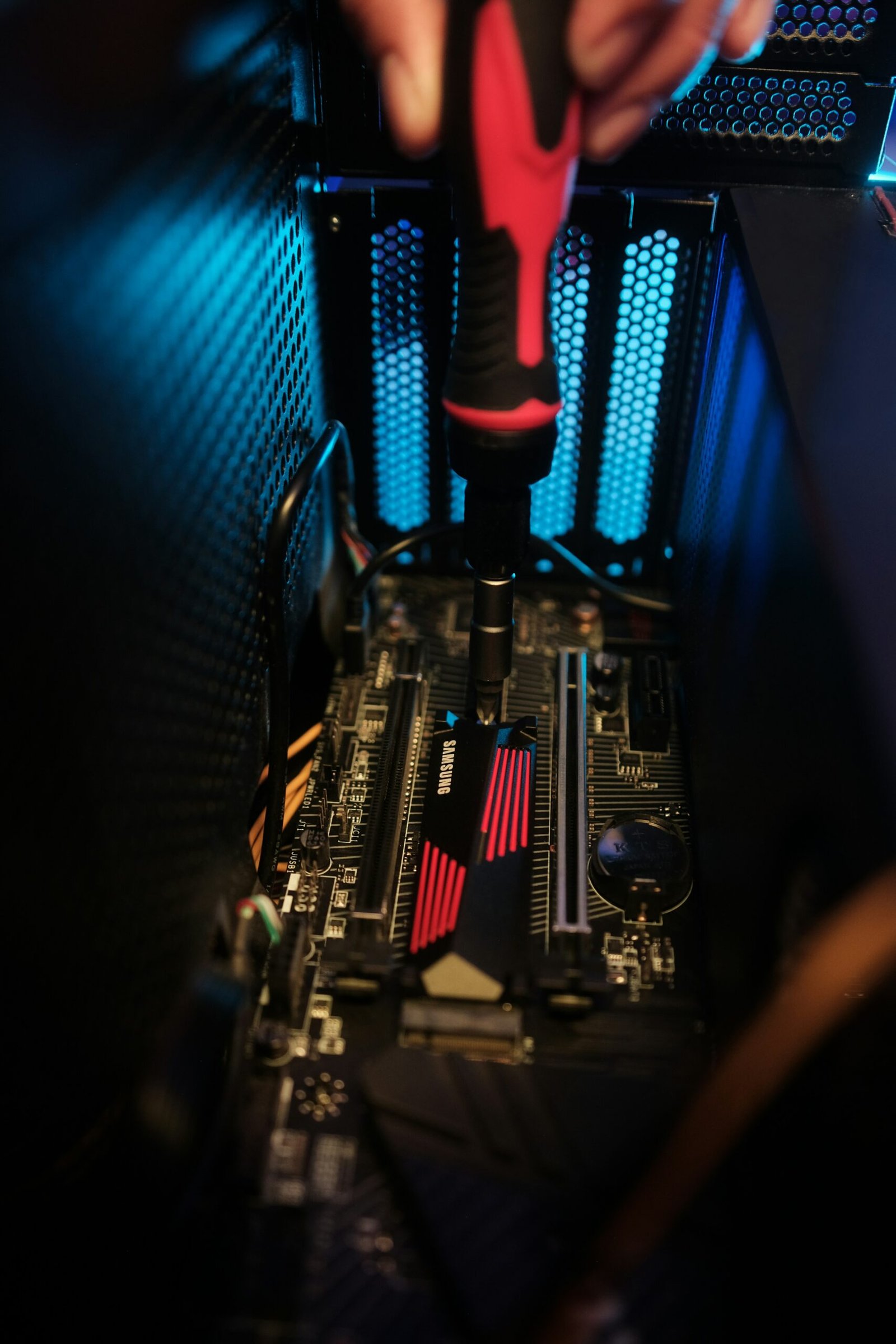Operational Technology (OPS) refers to the hardware and software systems that control physical processes. These systems manage machinery, devices, and other manufacturing, energy, and transportation equipment. Unlike IT systems that manage data, OPS systems manage physical operations. For example, they control machines on a factory floor or monitor systems in a power plant.
In this post we will learn in detail about What is OPS Technology?
Why is OPS Technology Important in Modern Industries?
OPS technology is crucial to contemporary enterprises since it increases productivity and security. It makes it possible to monitor and manage physical processes in real-time, which lowers downtime and avoids accidents. As companies become more automated and interconnected, OPS technology becomes essential for efficient and secure operations. With OPS, numerous industrial processes would be faster, more dependable, and error-prone.
OPS technology ensures that vital systems run smoothly in the manufacturing, transportation, and energy sectors. It enables companies to manage resources and react swiftly to problems effectively. Due to the increasing complexity of industrial systems, OPS technology is now more crucial than ever to preserve a competitive edge and guarantee operational success.
Also Read: How to Start a Career in Information Technology
Understanding Operational Technology (OPS)
What is Operational Technology (OPS)?
Operational technology, or OPS, is a system that manages and monitors tangible equipment in industries. To guarantee efficient operations, these systems control machinery, sensors, and equipment in real-time. Numerous businesses utilize OPS to manage everything from power plants to assembly lines.
How OPS Differs from Information Technology (IT)
Operational technology, or OPS, focuses on physical system control. In contrast, information technology (IT) involves communication systems and data management. OPS systems manage practical tasks like running machinery or pipelines, whereas IT systems manage networks and data storage.
Examples of OPS Systems in Various Industries
- Manufacturing: OPS systems control factory machines, ensuring production lines run smoothly and safely.
- Energy: OPS systems monitor power plants, regulating the flow of electricity and maintaining grid stability.
- Transportation: OPS technology manages traffic lights, train systems, and other transportation infrastructures for safety and efficiency.
Components of OPS Technology
- Hardware:
- Sensors: These devices detect physical changes, like temperature, pressure, or motion.
- Controllers: Controllers process sensor data and send commands to machines or other devices.
- Actuators: Actuators perform physical actions, such as opening a valve or starting a motor.
- Software:
- Monitoring Systems: These systems gather data from sensors and controllers, providing real-time insights into operations.
- SCADA (Supervisory Control and Data Acquisition) systems allow operators to monitor and manage industrial processes remotely.
- Industrial Automation Software: This software automates complex processes like production line control or energy distribution, improving efficiency.
In summary, OPS technology connects the physical world to digital systems, ensuring industries operate efficiently, safely, and effectively.
How OPS Technology Works

Physical processes and equipment are directly integrated with OPS technology. It connects devices like sensors, controllers, and actuators to create a fully automated system. By linking hardware with software, OPS technology ensures that machines run smoothly and efficiently.
For example, in a factory, OPS technology can control robotic arms, conveyor belts, and other equipment. In a power plant, it regulates turbines, generators, and switches. This integration helps industries run with fewer errors and less downtime.
Examples of How OPS is Used in Automation and Process Control
- Manufacturing: OPS technology automates assembly, packaging, and quality checks.
- Energy: In power plants, OPS systems control the flow of electricity and optimize power generation.
- Oil and Gas: OPS technology controls pumps, valves, and pipelines, ensuring safe and efficient oil extraction.
Real-Time Monitoring and Control
OPS systems allow for real-time data collection and monitoring of industrial processes. Sensors continuously send data to control systems, which then adjust operations accordingly. This enables quick responses to changes or problems.
In power generation, OPS technology monitors turbine speeds, pressure levels, and temperature in real-time. If something goes wrong, the system can make adjustments automatically. Similarly, in oil and gas industries, OPS can detect leaks or pressure drops in pipelines, immediately alerting operators to take action.
In both cases, real-time monitoring helps prevent accidents, reduces downtime, and improves efficiency. OPS technology enables industries to act quickly and maintain smooth operations.
Applications of OPS Technology
In Manufacturing
- Automation of Production Lines
- OPS technology automates production lines, making them faster and more reliable. Machines, robots, and conveyors work together to create products without human intervention, speeding up production and lowering labor costs.
- Benefits for Efficiency, Safety, and Precision
- Automation through OPS technology ensures higher efficiency, fewer mistakes, and better quality control. Because machines can complete tasks precisely, fewer mistakes are made during production. It also improves safety by removing workers from dangerous tasks like operating heavy machinery.
In Energy
- Smart Grids, Power Plants, and Energy Distribution
- OPS technology plays a crucial role in smart grids and power plants. It helps monitor and control the flow of electricity across grids, ensuring that power is delivered efficiently. OPS manages power plants’ turbines, generators, and cooling systems, improving overall plant performance.
- Energy Distribution
- OPS systems ensure that electricity reaches homes and businesses without interruption. They automatically detect problems and reroute power to prevent outages, making energy distribution more reliable and efficient.
In Transportation
- Smart Traffic Systems
- OPS technology manages intelligent traffic systems, adjusting traffic lights based on real-time traffic flow. This reduces congestion and ensures smoother travel. Traffic sensors send data to control centers, which optimize traffic light timings for better flow.
- Control Centers and Railway Automation
- Control centers also use OPS technology to monitor transportation networks, ensuring everything runs smoothly. In railways, OPS systems manage train schedules, track switches, and safety systems to keep trains on time and prevent accidents.
Overall, OPS technology is crucial in improving the performance, safety, and efficiency of manufacturing, energy, and transportation industries.
Benefits of OPS Technology

Improved Efficiency
- OPS technology optimizes operations by automating tasks and reducing manual intervention.
- It ensures machines and systems work at their full potential, reducing delays and increasing output.
- By continuously monitoring processes, OPS systems quickly detect issues and make adjustments, minimizing downtime.
For example, robots can work around the clock in factories, improving production speed.
Enhanced Safety
- OPS systems help prevent accidents by continuously monitoring equipment and environmental conditions.
- In hazardous environments, such as power plants or factories, OPS can detect problems like overheating, pressure buildup, or system malfunctions.
- When an issue arises, the system can automatically shut down machinery or alert workers, preventing accidents.
- This is especially important in dangerous industries where human safety is a top priority.
Cost Savings
- OPS technology reduces operational costs by optimizing performance and resource management.
- By increasing automation and reducing downtime, businesses save on labor costs and avoid costly mistakes.
- In energy-related industries, OPS helps manage resources more efficiently, reducing energy waste and lowering utility costs.
- Over time, these cost savings can significantly improve a company’s bottom line.
- Overall, OPS technology improves efficiency, enhances safety, and reduces costs, helping businesses run smoothly and profitably.
Challenges in OPS Technology
Cyberattacks on OPS systems may jeopardize critical infrastructure. Hackers target industries that depend more on connected gadgets. OPS cyberattacks can result in physical damage to machinery, disruption of operations, and even loss of valuable data. For example, a cyberattack on a power infrastructure could lead to equipment damage and power disruptions.
Recent hacks have targeted sectors like manufacturing, transportation, and energy. In 2020, attacks on the U.S. energy grid affected control systems. Similarly, hackers have targeted water treatment plants, interfering with their operations and endangering public safety. These assaults demonstrate how dangerous cyber threats to OPS systems are becoming.
Integrating OPS with traditional IT infrastructure can be challenging. OPS systems are often older and must be designed to connect with modern IT systems. Data sharing between the two systems may become difficult due to compatibility problems. Inadequate integration can hinder real-time decision-making and result in inefficiencies.
Future of OPS Technology
OPS technology is being shaped by AI, IoT, and machine learning developments. Thanks to these technologies, OPS systems are becoming more intelligent and effective. AI can make judgments in real time after analyzing enormous volumes of sensor data. IoT devices allow OPS systems to gather more detailed data and improve coordination. Machine learning helps predict potential issues, reducing downtime and increasing system reliability.
AI-powered systems, for instance, can optimize power consumption by analyzing energy usage patterns. Similarly, early failure detection using IoT sensors in manufacturing facilities enables quicker repairs. As a result of these developments, OPS systems are becoming more responsive and flexible.
The push toward intelligent OPS systems focuses on automation, predictive maintenance, and self-monitoring. Thanks to self-monitoring, OPS systems can track their performance and spot problems before they become serious ones. Predictive maintenance, which uses data to forecast when equipment will require repairs, helps avoid unplanned malfunctions.
Numerous industries have automated routine jobs, lowering the need for human intervention. This change reduces labor expenses while increasing efficiency and safety. For instance, automated systems in power plants can make repairs and change settings in response to real-time data, guaranteeing uninterrupted operation.
FAQs
What is the meaning of Tech OPS?
Tech OPS, or technical operations, refers to managing and maintaining IT systems and infrastructure. It includes tasks like system monitoring, troubleshooting, and ensuring the smooth operation of technology. Tech OPS ensures that all systems run efficiently and securely.
What is OPS used for?
OPS technology manages industrial systems and processes, such as automation and control. It helps monitor and optimize operations in various industries, such as manufacturing, energy, and transportation. OPS ensures everything runs smoothly, efficiently, and safely.
What is the OPS system?
The OPS system is a combination of hardware and software that manages operations. It includes sensors, controllers, and monitoring software to track and control industrial processes. OPS systems improve efficiency, reduce errors, and ensure operational safety.
How does OPS work in technology?
OPS integrates sensors, controllers, and software to monitor and control physical systems. It collects real-time data and adjusts processes automatically to optimize performance. OPS technology helps industries automate tasks and improves system reliability and safety.
Why is OPS critical in industries?
OPS is vital for industries to improve efficiency, reduce downtime, and enhance safety. It automates processes, ensuring smoother operations and better resource management. OPS allows industries to stay competitive and manage their technology and systems effectively.
Conclusion
OPS technology is critical in industries like manufacturing, energy, and transportation. It helps automate processes, improve efficiency, and ensure safety. Through real-time machinery monitoring and control, OPS systems streamline operations. As businesses change, OPS technology is becoming increasingly crucial for maintaining secure and effective systems.
With AI and automation advancing systems, OPS technology has a bright future. Companies that use OPS systems benefit from increased productivity, less downtime, and lower expenses. Real-time monitoring and predictive maintenance will enable businesses to react swiftly to problems, averting expensive ones. In an increasingly digital environment, OPS technology will continue to support industries in maintaining their security and competitiveness.




Very interesting subject , thankyou for putting up.